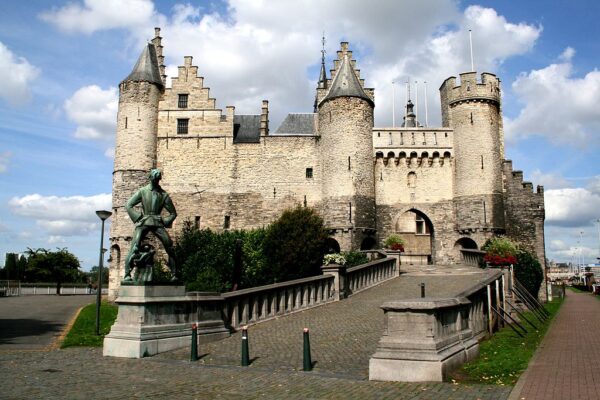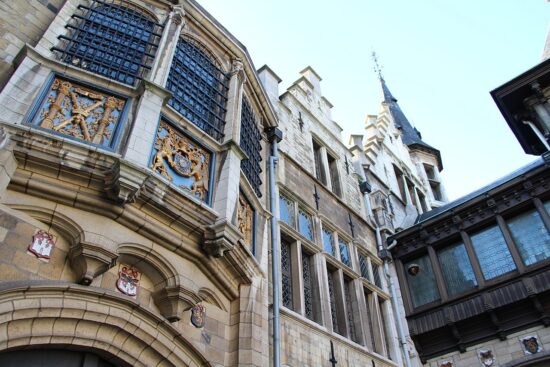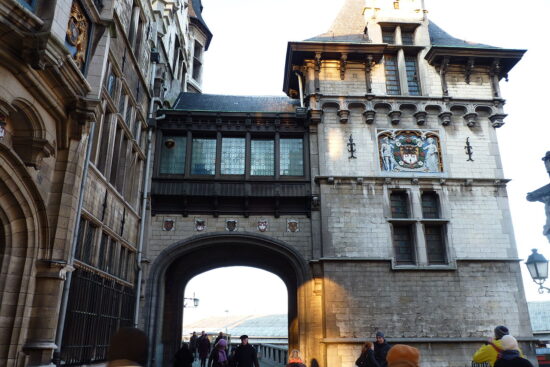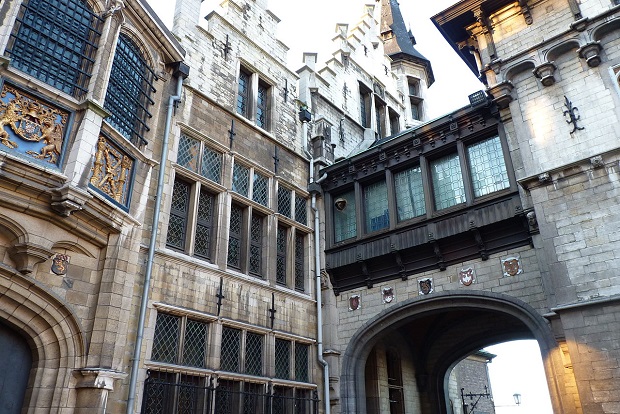Het Steen
Right on the eastern side of the Scheldt, on a jutting piece of land that offered a better chance of defense against the invading Norsemen lies the Het Steen (the stone), the focal point of the Old City for centuries. Approximately around the year 850, the first burg was constructed and reinforced by an earthen wall. Between 973 and 980, the ground within the castle was raised and a defensive moat was constructed.
Inside, the castle housed the wooden house of the marquis, a warehouse, a mint, and the castle court Church St. Walburga. In 1200 the castle becomes the first large building made out of stone, acquiring the name that would follow it for more than 600 years. The building started to serve as a prison in the first quarter of the 14th century while in 1481 it was largely dismantled except for the part along the Scheldt.


In the first quarter of the 16th century, Charles V ordered its reconstruction with stone which took place around 1590. The old castle remained as the still existing base of Tournai stone, clearly distinguishable from the late 16th-century sandstone superstructure. Charles V gave Het Steen to the city of Antwerp in 1549, which held it until 1828.
The building continued to serve as a prison, with torture and executions often carried out on its premises, especially during the Eighty Years War when the Spanish Inquisition took over its control. The bulk of the torture and execution equipment was burned by the French in 1794. The castle remained a prison until 1823; then served as a home for disabled soldiers until 1826.
In 1827 the building was requisitioned by the Dutch government, which sold it in 1828 to a sawmill. In 1842 the city bought back the building. The cellars were used as storage for fish, while the superstructure was inhabited by several families. In 1862 the building was intended for an archaeological museum and adapted for this purpose; In 1864 the museum was opened.


In the 1880s the whole historic center around Het Steen, all the adjoining streets and houses were demolished to widen the river and construct new quay walls.
The castle itself was barely saved from demolition -the city council voted in favor by just a single vote- however, it did become completely isolated from the remaining part of the old town. In 1889-90 the castle was restored, renovated, and expanded with a new, neo-Gothic-tinged wing.
In the 1950s the neo-Gothic north side was demolished and replaced by a new, modern exhibition hall, archaeological research was conducted at the center of the original castle, where remains were recovered from houses, walls, and warehouses in five successive levels, dating from about 850-1200.
Although most exhibits of the Maritime Museum have been moved into the MAS (Museum Aan de Stroom) there is still a rich collection of ship models and historic objects related to shipping. In any case, it is still a pretty indulging fortress related to the city’s history that can offer some of the nicest views of the city and its port. More



